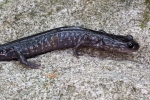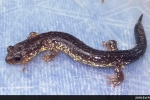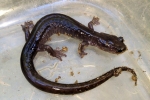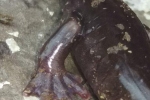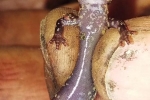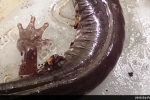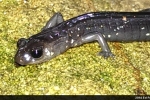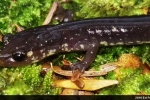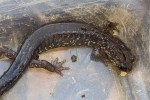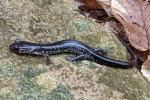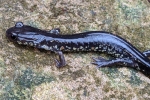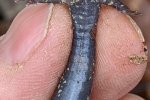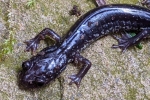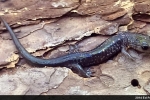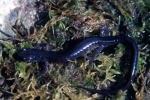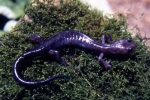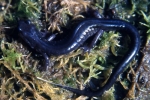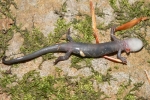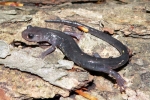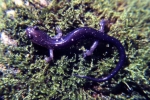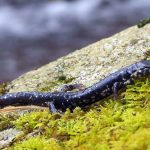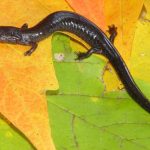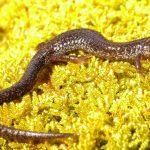Wehrle’s Salamander
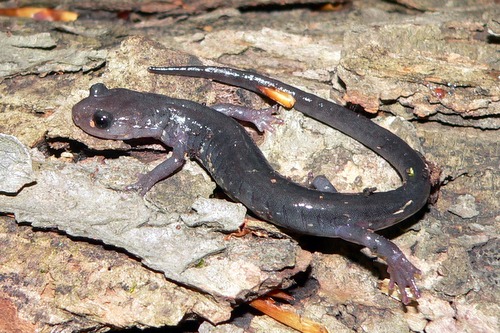
Scientific Name: Plethodon wehrlei
Size: 4-5 inches (10-13 cm) in length.
Status: Abundant
Habitat:
Mature mixed deciduous, mixed hardwood-conifer and coniferous forest.
Description:
Moderate sized species. The background color is brownish black to dark blueish black becoming lighter on the upper region of the jaw with small scattered white flecks on the dorsum; but the dorsum maybe unmarked. The sides are heavily mottles with irregular white, bluish white to yellow spots that may be transfused into blotches or irregular bars.
Behind the shoulder is a distinct red blotch that is more prominent in younger individuals.
The underside is grey. The throat and upper chest area may be blotched with white or yellow pigment.
- The dorsal background color is brownish black to dark blueish black becoming lighter on the upper region of the jaw with small scattered white flecks on the dorsum; but the dorsum maybe unmarked.
- The sides are heavily mottles with irregular white, bluish white to yellow spots that may be transfused into blotches or irregular bars.
- Behind the shoulder is a distinct red blotch that is more prominent in younger individuals.
- The ventral is grey.
- The throat and upper chest area may be blotched with white or yellow pigment.
- Moderate sized species.
- The legs are short and well-developed.
- The tail is long, stout and circular in the cross-section and tapers to a point.
- The head is flattened and distinct from the body.
- The hind feet are webbed.
- 17 costal grooves.
- Similar to adults.


References:
- Hulse, C. and McCoy C. J. and Ellen Censky ,1998. Amphibians and Reptiles of Pennsylvania and the Northeast. 115-119pp.
- Petranka, James W. ,1998. Salamanders of the United States and Canada. 409-411pp.
- Tom Diez
- Nicholas Sly
- Ed Patterson
Heads up!
Please contribute your observation of this and other herps to the Pennsylvania Amphibian and Reptile Survey. Your help is needed.
